HP Stream 7 Review: A $119 Windows Tablet
by Brandon Chester on December 19, 2014 8:00 AM ESTDisplay
The display is one of the most important aspects of a device, as it's the portal for interaction between the user and the software. Unfortunately, with inexpensive devices like the Stream 7, the display is often the first thing to be put on the chopping block. It's simply very difficult to put a high quality panel in a low cost device and make money selling it. That being said, HP has actually attempted to put a decent panel in the Stream 7 considering its price target.
Like I stated before, many other tablets at this size and price point either opt for a TN panel, or they reduce the resolution to 1024x600 or even go lower to 800x480, which is borderline unusable. HP has put a 1280x800 IPS panel in the Stream 7, which is fairly good considering that two years ago most Android tablets of any size shipped with that same resolution. The glass is highly reflective, and this is coupled with the fact that the display isn't laminated. There's also some light bleed at the bottom, but at $119 I can excuse this.
Of course, specs that you read on paper like size and resolution only tell part of the story. Color accuracy, brightness, and contrast all have an impact on overall display quality, and to measure these we use SpectraCal's CalMAN 5 software along with X-Rite's i1Pro 2 spectrophotometer and i1Display Pro colorimeter.
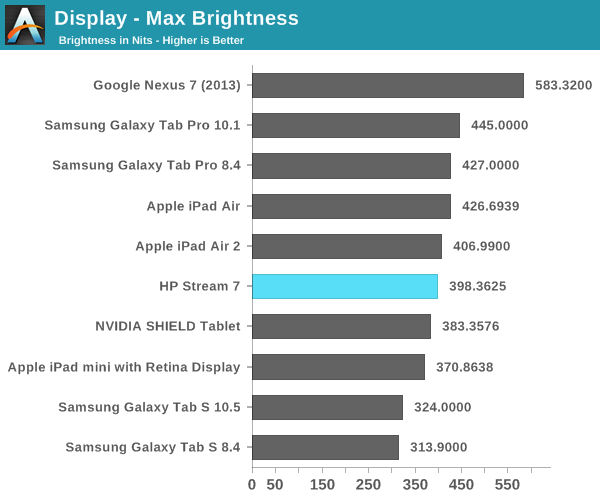
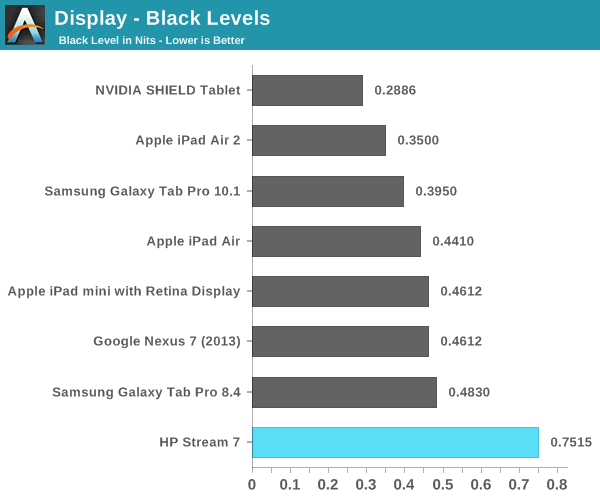
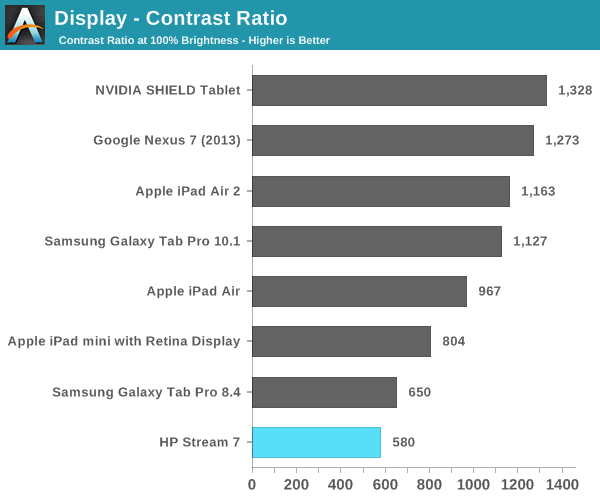
As you can see, the brightness of the Stream 7 is competitive with other tablets. Unfortunately, the black levels are just too high, which in turn leads to a very low contrast ratio. It should be noted that these measurements were achieved by disabling Intel's Display Power Saving Technology (DPST) feature, which causes dynamic brightness and contrast depending on the image displayed on the screen. While some other devices do this to some degree, DPST ended up reducing max brightness measurements by nearly 100nits, and the constantly changing brightness played havoc with measurements during analysis and calibration.


In the grayscale we see a shift toward blue, with the red steadily dropping off as brightness increases. This leads to the grayscale performance being some of the worst we have tested, but at $119 there's really no room for HP to do any calibration to the display panels at the factory.
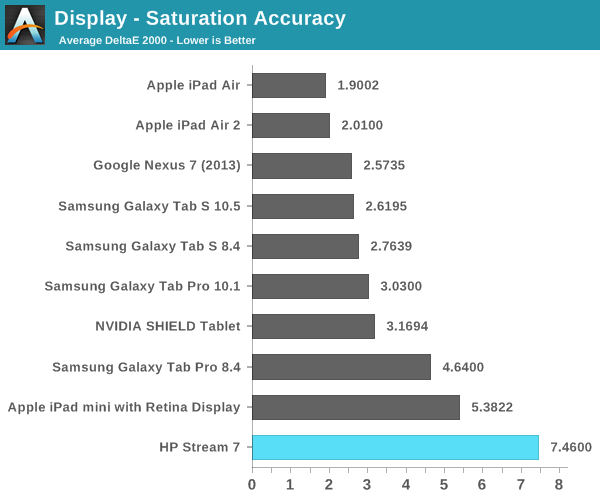
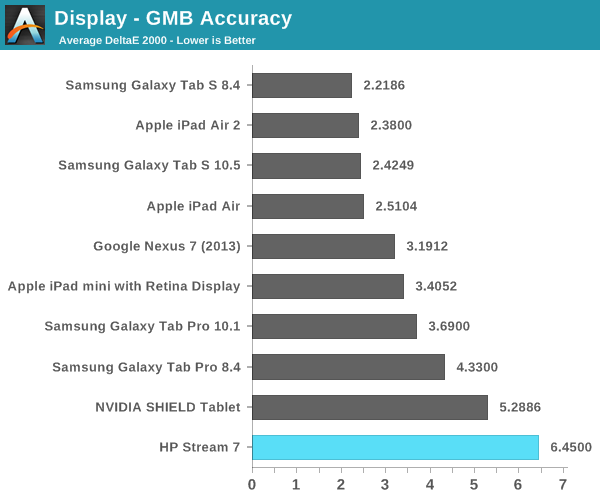
As with the grayscale test, we see poor performance in the saturation sweep. The display does not cover all of sRGB, and we see that for each 20% increment in the saturation sweep, the red, blue, and magenta saturations are all 20% lower than they should be and just generally inaccurate. The poor grayscale and saturation performance leads to a high average error in the color checker test, which means that the Stream 7 is not going to be able to accurately reproduce colors.
Again, this is to be expected with a device of this price point. It does however provide a good example of how the idea that IPS technology correlates with color accuracy is a misconception. With the prices of IPS displays being driven into TN territory by affordable eIPS panels, having an IPS display really just guarantees better viewing angles than a TN panel, nothing more.
One last thing to note about the display which does not show up in any measurements is that it is a 6bit + AFRC eIPS panel. This is not uncommon even in desktop monitors that cost as much as $400, but it does mean that there is noticeable posterization compared to a display with actual 8-bit color depth for red, green, and blue. This is not helped by the fact that Internet Explorer is not smart about displaying images; it doesn't seem to apply the same dithering that Chrome and Firefox do to mask color banding.
Calibration
Fortunately, the HP Stream 7 runs Windows. Unlike Android and iOS, Windows has color management capabilities. This allows us to calibrate the Stream 7 in an attempt to fix some of the issues with the display. We are working with a narrow gamut panel here so we aren't going to see much improvement to the saturation test, but we can certainly improve grayscale and color accuracy within the display's gamut.
After creating and applying an ICC profile created by CalMAN, we see a dramatic improvement in grayscale performance on the Stream 7. Gone is the shift toward blue, with a white point of 6595K that is very close to standard. Shades of grey are now accurate enough that you would be unable to see a difference from a reference monitor. These improvements unfortunately are accompanied by a significant drop in luminance, with a max display brightness of 308.5 nits after calibration.
We see slight improvement in the saturation sweep, but it's still nothing exceptional and unfortunately bound by the display's small color gamut. However, there's a significant improvement in the color checker test, although much of this can be attributed to the improvements in grayscale. There is an overall improvement in the accuracy of colors, but a few colors actually have a greater error after calibration than before. The biggest improvements are to mixtures of green and red, which has a significant impact on photos and videos by improving the accuracy of skin tones.
Overall, I'm surprised that the Stream 7 was able to be improved this much. It's certainly not perfect after calibration but it's much better. Unfortunately, I don't think many buyers of the Stream 7 are going to have the necessary equipment to calibrate the display properly, so it's more of an academic exercise.


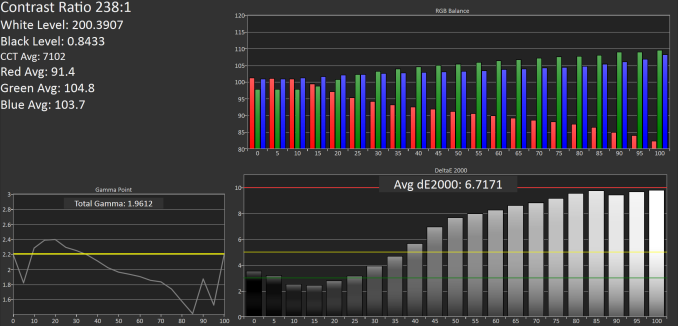
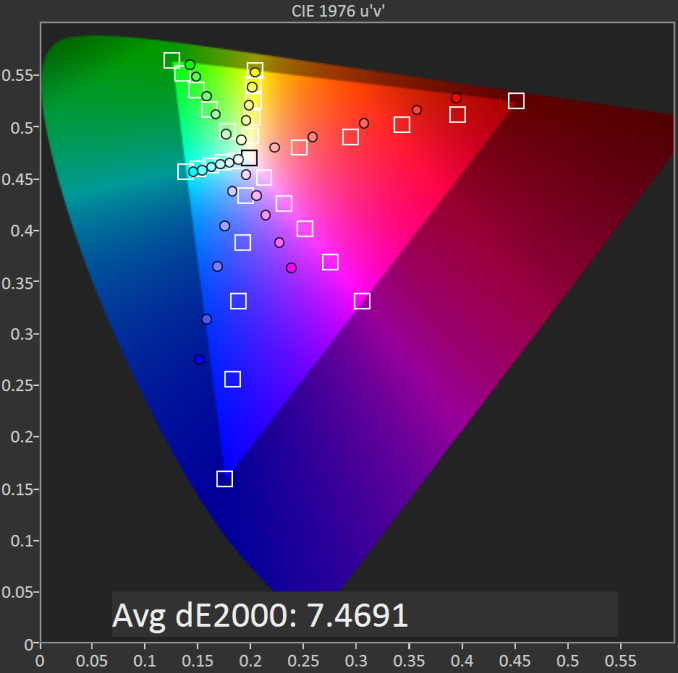
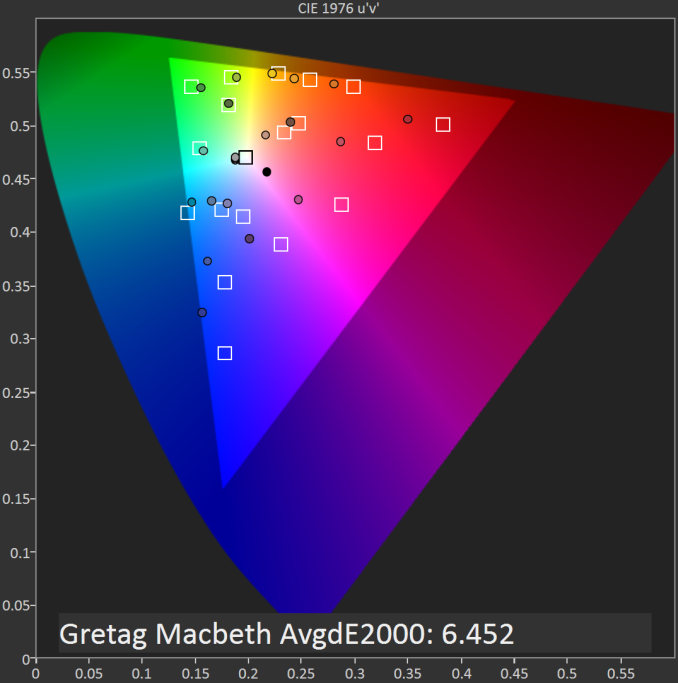
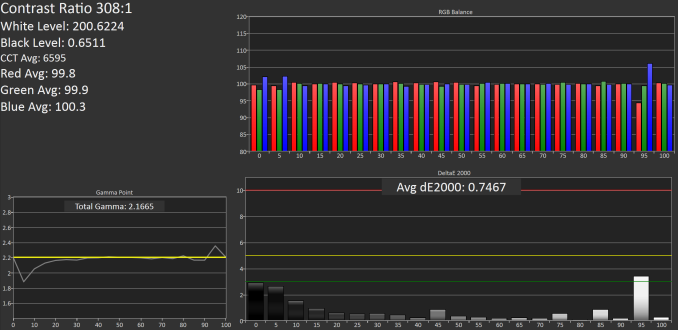
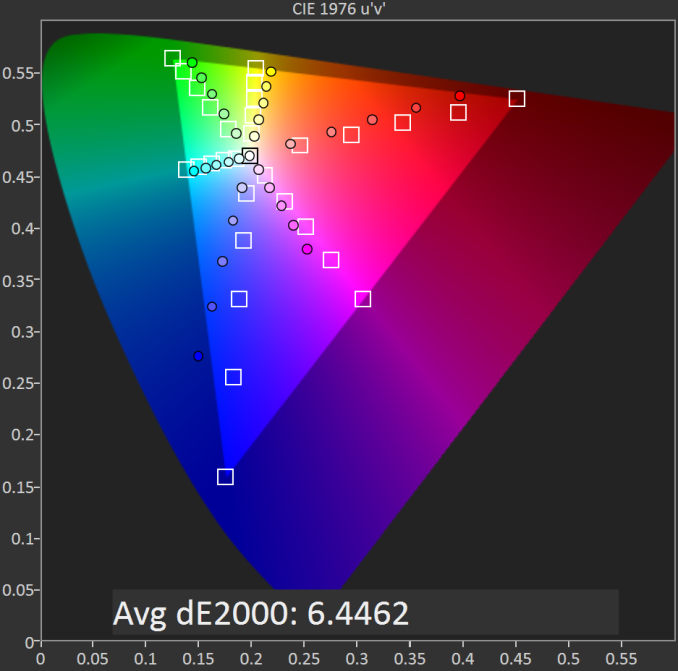
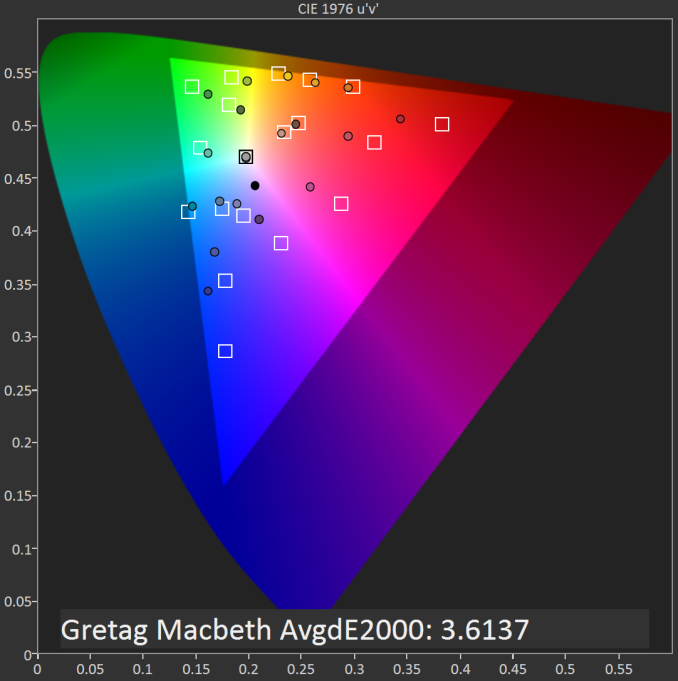








157 Comments
View All Comments
pugster - Friday, December 19, 2014 - link
I brought one of these tablets for $70 this week actually after a couple of promos from Microsoft. I wish that they had included an dongle where you can plug in an usb drive in it and an hdmi port. I have windows 8 pc's and using this windows 8 tablet is definitely a learning curve compared to Android tablets and ipads. I was surprised that windows 8 with 1gb of ram is responsive in this tablet assuming that you won't multitask that much.Since Microsoft gives out these windows 8.1 with bing licenses for free, I would imaging that we would see many Chinese tablets to get into this bandwagons for cheap tablets next year.
swkerr - Friday, December 19, 2014 - link
I actually bought 2 of these of the kids for Christmas. One at $99 and one for $74 from the Microsoft store. I have been using a Nexus 7 second Gen for more than a year and have found it to be the perfect size. It is really just a glorified reader and Alarm clock. I use it to read the news and check email and occasional light gaming but never video or music.I figured for this purpose the Stream 7 would be fine and anything else was just a bonus. The Office subscription is a big plus as well. I have already set them up and tested them and am actually very impressed. I actually purchased a case ($10) Mini Bluetooth Keyboard with touch-pad ($30) and a 64GB MicroSD card ($25)
As setup I was able to install Sims4 and Origin and the game actually plays pretty good. I installed Steam and The Swapper on the other and again works fine. Some of the Windows games are not bad either.
Flipboard, Facebook and Twitter all work well as well as Nexflix, Hulu and Plex. Alarm Clock HD + was the best Alarm clock app I could find and it works great. Not sure I would ever use office on one of these without the Bluetooth keyboard but with the keyboard it would work fine in a pinch.
I have a Microsoft Wireless Miracast dongle on my TV and the Stream 7 works perfectly with it. Even at the low resolution it looks pretty good streaming from Netflix. I was able to get it to run at 1080p as well but then you need the bluetooth keyboard.
If you think of this thing as a PC it sucks but as a 7 inch table it really does what you expect of it and at $99 it is a bargain. The Metro app store is limited but the basic crap people really use is there. And if it is not you still have a browser and all the old PC apps that will probably run fine. The lack of touch support on the old games and apps may be an issue and some things don't size will to the low resolution but for what you are likely to use it for it is great.
Was considering buying another Nexus 7 in case I broke my current one but would probably get one of these instead. I have several 10" Transformer tables and They are just too big for how I use a tablet. Even the 8" android and iPad Mini are just that much too big as a reader.
CharonPDX - Friday, December 19, 2014 - link
"This wouldn't be an issue if these Windows tablets allowed you to directly move files to them from another computer over USB, but they don't."But they do. The micro USB port supports the "USB OTG" (USB On-The-Go) specification. With a simple adapter, the port can be converted to a full-size USB Type-A port, to which you can plug in whatever USB devices you want. (That's the extra bonus of it running full Windows 8.1.) I have used my HP Stream 8 with a variety of USB devices.
Note: The Stream 8 is different than the Stream 7 in only three ways that I can find:
1. It has a 1" larger screen (8" instead of 7", but with the same quality of screen.)
2. It includes 4G wireless (HSPA+, aka "3.5G" to most of us,) with 200 MB per month free form T-Mobile. I have T-Mobile for my family, so I just pay the $10/month to duplicate the amount of data on my highest-data line.)
3. It costs $179. (Which is a steal - since it costs $139 just to *ADD* 4G to an iPad.)
Brandon Chester - Friday, December 19, 2014 - link
Out of the box you can't do it, which is what matters.PC Perv - Friday, December 19, 2014 - link
Why not? All you need is a right cable. I am sure one will find such a cable for a lower price than Apple's Lightning cable's.You are such an ignorant and arrogant creature. Though I know why you want to disregard the utility of USB OTG. Which makes you a crooked creature on top of the aforementioned.
CharonPDX - Monday, December 22, 2014 - link
Really? Then no desktop computer should ever have its utility on the internet considered since it doesn't come with internet built-in (you need SOME form of internet connection!)No printer should ever be considered worth using, because it doesn't come with paper in the box.
A USB on-the-go cable costs all of $1.47 at Monoprice.
I'm sorry, but that being your answer to my statement makes me seriously downgrade my judgment of you. Had you replied "I had forgotten about USB On-The-Go," I would have given you plenty of slack. But to completely dismiss an actually available core function completely, simply because "you can't do it out of the box," is rather haughty and dismissive.
My Xbox is a crappy game system when it doesn't come with any games in the box.
Using a USB On-The-Go adapter, you're limited to USB Hi-Speed speeds, but my USB 3.0 128 GB flash drive works just fine, and is plenty fast. In fact, it's almost certainly faster than the internal eMMC SSD. (Copying large files from eMMC to USB gets me about 27 MB/s. Copying large files from the USB to the eMMC is about 30 MB/s.) PLENTY fast to transfer large files.
Brandon Chester - Friday, December 26, 2014 - link
It would be fine if the ability to send files from a PC via a direct USB connection was not an expected ability for a tablet, but it is. Alternatively, HP could have used faster and more stable WiFi and it would be a non-issue. Ferrying files between the two devices with a USB drive is a time consuming and cumbersome process, and having to go get additional hardware for it is an additional hurdle. I actually don't live near any electronics stores, so I would either need to drive a significant distance to get a USB-OTG adapter, or I would have to pay for one and have it shipped which takes time and reduces the tablet's price appeal, especially when paying shipping fees here in Canada.CharonPDX - Friday, December 19, 2014 - link
Mini related review:I bought the Stream 8, which is 1" larger, and includes HSPA+ "4G" service, for $179. My findings are near-identical to this review. The battery life is longer, and the back of the device fits better than Brandon describes the 7, but otherwise it seems the same to me, right down to the headphone jack noise issue. (I use Bluetooth headphones, so I mitigate that.)
In the past year, I have switched between an iPad Air, a low-end Android tablet (the Air became my daughter's tablet,) to the HP Stream 8. I like the Stream 8 the best - even better than the iPad Air (and I was a 100% Apple user for personal devices prior.) I REALLY like having full-blown Windows available to me when I need it. I carry a small Bluetooth keyboard and mouse with me (Microsoft Wedge Mobile keyboard,) when I need to use it as a "real computer" rather than a tablet.
The cellular connection is a nice bonus over the 7" model - and while the T-Mobile "free 200 MB per month for the life of the device" isn't much data, but it is a nice "lifeline" for emergencies. (I have a T-Mobile family plan, so I just added it to my family plan for $10/month.)
bill.rookard - Friday, December 19, 2014 - link
Just as a quick note, maybe I got lucky. I'm watching Guardians of the Galaxy right now through headphones with absolutely no static issues whatsoever.CharonPDX - Monday, December 22, 2014 - link
I haven't listened to headphones often after the first couple times being static-driven. I was using Apple EarPods (because they're my standard "desk" 'phones at work.)I have now tried a few more, and the EarPods are the noisiest. Headphones that don't also have a microphone are the best, with some old-school Sony Studio Monitors (which are generally my best-sounding headphones every time,) having the lowest noise, but still having some.
The Sonys, and a couple of the other "no microphone" ones are quiet enough that I can only hear the static during silent/very quiet periods.